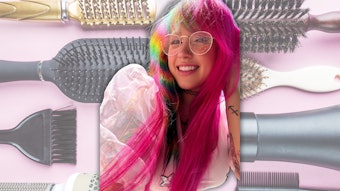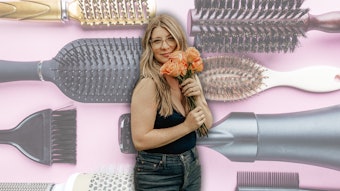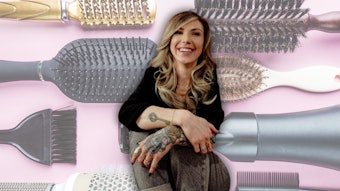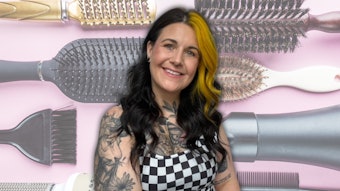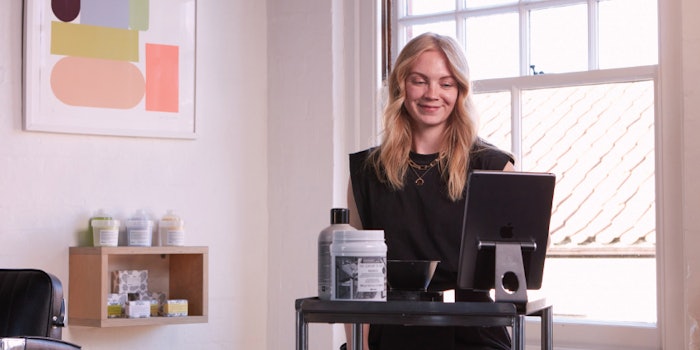
They almost definitely won’t align because, in the average salon, as much as 40% of color is lost to over-mixing or over-application and around 15% of revenue to insufficient charging. Giving color away for free is dire for profitability, but the arrival of color management software has been a lightbulb moment for thousands of owners and stylists. By maximizing this new tech, salons have seen profits stabilize and grow, with an average salon adding $60,000 to $100,000 to their bottom line. They are making the most of their software, and you can, too.
Log in to view the full article
If you are wondering where your profits go, glance over your color use vs. color sales.
They almost definitely won’t align because, in the average salon, as much as 40% of color is lost to over-mixing or over-application and around 15% of revenue to insufficient charging. Giving color away for free is dire for profitability, but the arrival of color management software has been a lightbulb moment for thousands of owners and stylists. By maximizing this new tech, salons have seen profits stabilize and grow, with an average salon adding $60,000 to $100,000 to their bottom line. They are making the most of their software, and you can, too.
1. Iron Out In-salon Discrepancies
One of the most disturbing revelations of color tech is the chasm between stylists when it comes to color use. Data has shown some may use $18 worth of color for a service, while another uses just $3 for the exact same service. There might be more waste in the bowls, but more likely stylists are over-applying or upgrading the service entirely, which is bad for clients and profits. With software, it’s easy to identify training gaps and, with data-backed benchmarks, eliminate those variances. To help, a free checklist called The Efficient Stylist’s Checklist* as been launched to show what top stylists consider included in the top five services. This list is a great addition to the color bar before the busy season, even if you don’t have color tech yet.
2. Capture Every Drop Dispensed
Adding a charge for extra color dispensed beyond a set threshold should protect profits, but it doesn’t often happen as it’s left to the individual to remember and find time to put it on the ticket. Same goes for additional services such as toners.
“Technology has cut salon waste, and so brought down costs, but it also means that every additional bowl or extra service is captured on the system rather than us having to rely on the team remembering to add it to the ticket, which boosts revenue,” says Kelley Swing, owner of Texas based Head Case Salon. “If I’d had color technology two years earlier, I would have an extra $100k in the business.”
3. Reduce Waste = Reduce Costs
Horrific levels of color are thrown away every week, most of which has been paid for by the salon. But new color software is saving huge amounts of product each week through its re-weigh function. Bowls are re-weighed after application, revealing what may not look like much but quickly adds up. The software then recalibrates the formula so the next time the guest is in the stylist knows the exact quantities needed to create a fabulous look, and there is no waste in the bowl. The secret is to ensure every bowl is re-weighed, and those salons that encourage their team to re-weigh report the greatest drops in color waste.
4. Revise Color Allowances
New clients can often mean spikes in waste, but the option to start with smaller amounts and simply mix more is enabling salons to set lower allowances for each service. If they find those 40g isn’t quite enough, mixing more is straightforward. The formula is on the system so consistency between mixes is guaranteed, and they can mix what they require, maybe just half or even 25% more because the math is done for them. Even better, simplicity of use means anyone in the salon, including the receptionist, can mix for the stylist if the stylist can’t break from the service.
5. Modernize Pricing For Profit
Being able to identify exact color costs in every service opens the way to updated pricing. Many salons, including Head Case, have used the data to set minimum allowance thresholds, which, once passed, kick in additional pricing rules set by the salon. Other salons and stylists have gone for a pure parts and labor model. Laura Watkins, owner of Pure Salon Spa in Louisville, KY, opted for time-based charging. The salon allocates one-hour appointments, with stylists given the freedom to book shorter or longer appointments based on their guest’s hair needs.
“It’s a pretty simple formula for how we decided what to charge,” explains Watkins. “We took six months of history and all the hours available for sale in our business and then we looked at what our expenses were to get a per-hour cost. This included a charge to cover operational expenses and to give a level of profitability—and that’s what we are charging.”
6. Make Sure Your Tech Talks
Not all color management systems are equal, so check yours includes one of the most important functions – the ability to integrate with your salon software. This saves a ton of duplication and data entry at the Color Bar. Bringing over employee, client and appointment info into the software, the mixing becomes a breeze as the information is right there.
7. Free Up Formulas
Being liberated from the need to manually record formulas is possibly the number one benefit for stylists. “How many times have you gone back to mix a formula after your client said the last one was perfect, and get to your notes only to realize you forgot to write it down?” says Derek Anthony, of D.Anthony Salon, Nyack, NY. “That has happened to every busy hairdresser and salon for sure. Color management tech can automatically record what colors were used and precise amounts for each visit and shows on each client’s history profile. It is an absolute game-changer.”
You can go a step further once formulas are on the system and look after a guest even when their stylist is absent, maximizing profit from every appointment. Filling every chair every time, while using less color and charging for what is used has allowed thousands of stylists to build stronger, more secure income.


